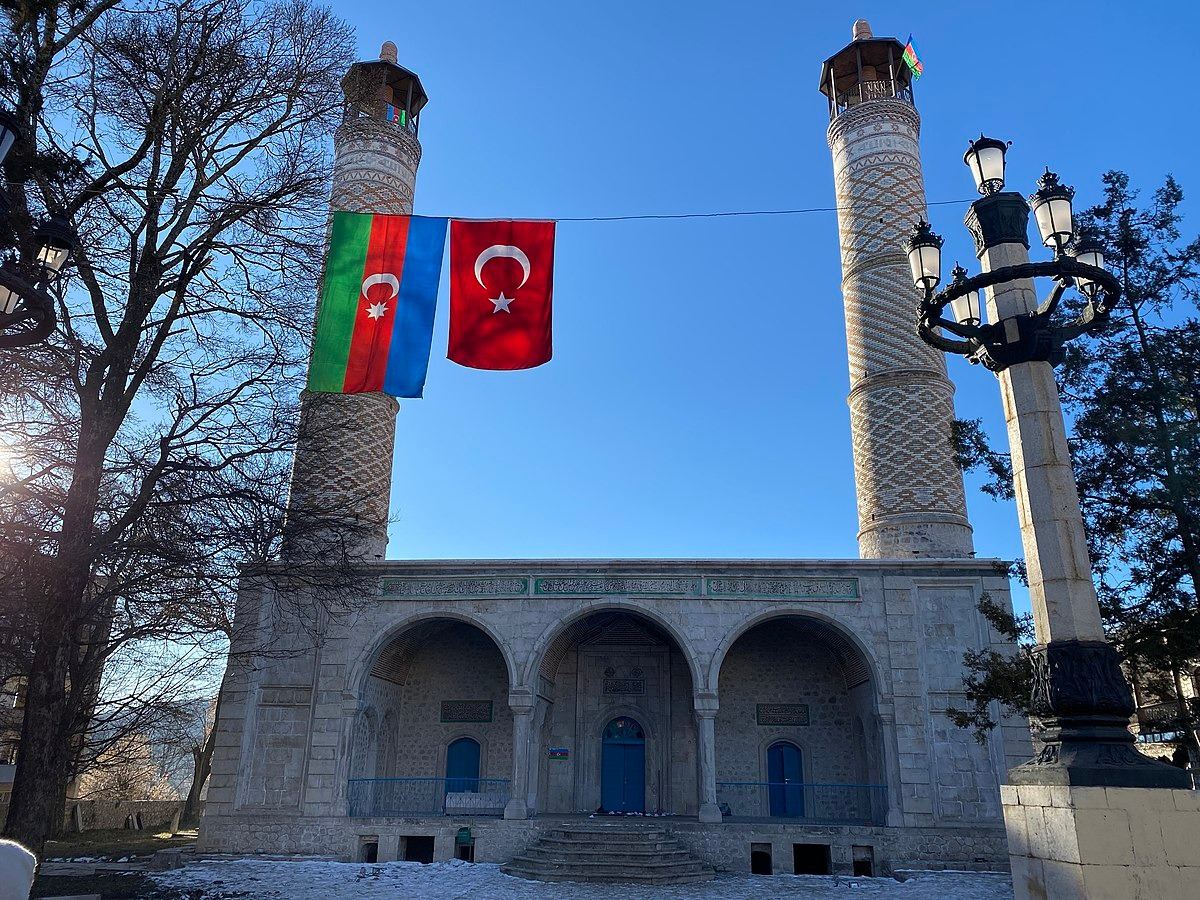Azerbaijani President Ilham Aliyev believes there should be a peace agreement between Armenia and Azerbaijan to recognize each other’s territorial integrity and borders.
According to President Aliyev, Baku is ready to sign a peace treaty with Yerevan.
“However, there is no reaction from Armenia; there is no official reaction. The information we have received through unofficial channels is that Armenia is not ready for this,” President Aliyev said on July 14.
He further added that such an approach from the Armenian side could lead to a big mistake similar to what has been seen before and during the war with Azerbaijan in the Karabakh region. The Azerbaijani president is convinced that the authorities of Armenia should assess the peace proposal before it’s too late.
“Because our proposal is based on a new, real situation. We believe that the issue has been resolved, and there should be a peace agreement between Armenia and Azerbaijan. There must be recognition of each other’s territorial integrity, recognition of borders, and delimitation work must begin,” the Azerbaijani president said.
Armenia’s authorities, however, say peace could be achieved after Azerbaijan recognizes the so-called status of the separatist “Nagorno-Karabakh” region. They have long been seeking the so-called “status” to the separatist regime deployed in the once occupied Karabakh region of Azerbaijan.
However, Baku is not going to recognize any “status” for such an illegal formation.
“If we are talking about the status of Nagorno-Karabakh, I said that there is no territorial unit called Nagorno-Karabakh in Azerbaijan. In general, this term should not be used. There is no Nagorno-Karabakh – there is Karabakh,” President Aliyev said, adding that the conflict has been resolved.
Armenia and Azerbaijan have long been at odds over the latter’s Karabakh (Garabagh) region. On September 27, 2020, the decades-old conflict between the two countries spiraled after Armenia’s forces deployed in the occupied Azerbaijani lands shelled military positions and civilian settlements of Azerbaijan. During the counter-attack operations that lasted 44 days, Azerbaijani forces liberated over 300 settlements, including the cities of Jabrayil, Fuzuli, Zangilan, Gubadli, and Shusha, from nearly 30-year-long illegal Armenian occupation. The war ended in a tripartite statement signed on November 10 by Armenia, Azerbaijan, and Russia. Under the statement, Armenia also returned the occupied Aghdam, Kalbajar, and Lachin districts to Azerbaijan.
The post-war agenda of the Azerbaijani government includes the restoration of the liberated lands and the delimitation of borders with Armenia, which was out of Baku’s control during the years of occupation. With the liberation of Zangilan, Gubadli, Kalbajar, and Lachin, Azerbaijan regained control over its borders with Armenia. Today, the Armenia-Azerbaijan state border is literally closed and became a militarized zone due to the once-active conflict between the sides.
The ongoing ceasefire agreement between Armenia and Azerbaijan has been proven to be partially effective amidst periodical violations by the Armenian forces.
Illegal Armenian armed gangs have been committing provocations in the Karabakh region of Azerbaijan since the end of hostilities on November 10, 2020. In November and December of the same year, they attacked the Azerbaijani positions in the liberated Khojavand district, killing four servicemen of the Azerbaijani army.
In May, a group of Armenian saboteurs crossed Azerbaijan’s borders illegally to plant mines in the routes and paths used for supplying the military posts of Azerbaijan in the district of Kalbajar. In June and July of this year, the Armenian forces violated the ceasefire more than ten times and wounded several Azerbaijani servicemen.







 Armenian sappers commenced on Monday mine-clearance operations in the territories adjacent to the Saint Mary Church in village of Voskepar (Armenia...
Armenian sappers commenced on Monday mine-clearance operations in the territories adjacent to the Saint Mary Church in village of Voskepar (Armenia...
 Russian Foreign Minister Sergei Lavrov has reasserted that Moscow has no intentions to stop the fighting in Ukraine, even if peace talks commence.
Russian Foreign Minister Sergei Lavrov has reasserted that Moscow has no intentions to stop the fighting in Ukraine, even if peace talks commence.
 Iran has refuted reports of alleged damage to Shimon Peres Negev Nuclear Research Centre located southeast of Dimona, Israel, during the recent air...
Iran has refuted reports of alleged damage to Shimon Peres Negev Nuclear Research Centre located southeast of Dimona, Israel, during the recent air...
 Iran and Pakistan have signed eight cooperation documents in various fields, and agreed to strengthen ties to fight terrorism in the region.
Iran and Pakistan have signed eight cooperation documents in various fields, and agreed to strengthen ties to fight terrorism in the region.



